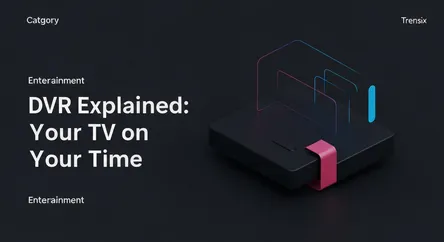Entertainment
DVR Explained: Your TV on Your Time

Discover the Digital Video Recorder (DVR), a device that lets you record, store, and watch TV shows on your own schedule. Never miss an episode again.
What is it?
A Digital Video Recorder (DVR), or Personal Video Recorder (PVR), is a device that records television programs in a digital format to a hard drive or other storage medium. Unlike old VCRs, DVRs offer superior video quality and advanced features like the ability to pause and rewind live TV, create instant replays, and schedule recordings for entire series with a single click. Early pioneers like TiVo revolutionized home entertainment by giving viewers unprecedented control over their television content.
Why is it trending?
While dedicated DVR boxes are less common now, the technology is thriving through cloud integration. Modern live TV streaming services such as YouTube TV and Hulu + Live TV include Cloud DVR (cDVR) functionality as a core feature. This allows users to save recordings to a remote server, offering virtually unlimited storage without physical hardware. This trend is fueled by consumer demand for blending the variety of linear TV with the on-demand convenience of streaming, ensuring viewers never have to miss their favorite shows.
How does it affect people?
DVRs fundamentally changed viewing habits by popularizing "time-shifting"—watching broadcast television at a time of the viewer's choosing. This liberation from fixed schedules diminished the concept of "appointment TV" and empowered audiences. It also enabled binge-watching and gave viewers the power to skip commercials, which significantly disrupted the traditional television advertising model. This shift forced networks and advertisers to innovate, leading to more integrated marketing and on-screen promotions rather than relying solely on commercial breaks.